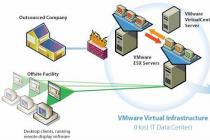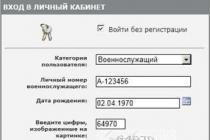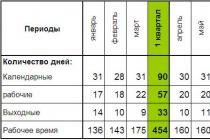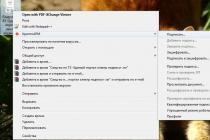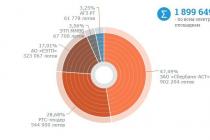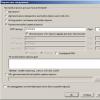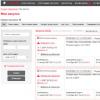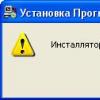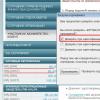Information about the brand, model and alternative names of a specific device, if any.
Design
Information about the dimensions and weight of the device, presented in different units of measurement. Used materials, offered colors, certificates.
| Width Width information - refers to the horizontal side of the device in its standard orientation during use. | 69.7 mm (millimeters) 6.97 cm (centimeters) 0.23 ft (feet) 2.74 in (inches) |
| Height Height information - refers to the vertical side of the device in its standard orientation during use. | 139.5 mm (millimeters) 13.95 cm (centimeters) 0.46 ft (feet) 5.49 in (inches) |
| Thickness Information about the thickness of the device in different units measurements. | 9 mm (millimeters) 0.9 cm (centimeters) 0.03 ft (feet) 0.35 in (inches) |
| The weight Information about the weight of the device in different units of measurement. | 143 g (grams) 0.32 lbs (pounds) 5.04 oz (ounces) |
| Volume The approximate volume of the device, calculated based on the dimensions provided by the manufacturer. Refers to devices with a rectangular parallelepiped shape. | 87.51 cm³ (cubic centimeters) 5.31 in³ (cubic inches) |
| Colors Information about the colors in which this device is offered for sale. | Red Black White |
| Materials for the manufacture of the case Materials used for the manufacture of the device body. | Polycarbonate |
SIM card
The SIM card is used in mobile devices to store data that certifies the authenticity of mobile service subscribers.
Mobile networks
A mobile network is a radio system that allows multiple mobile devices to communicate with each other.
Mobile technology and data rates
Communication between devices in mobile networks is carried out using technologies that provide different data transfer rates.
Operating system
An operating system is the system software that controls and coordinates the operation of the hardware components on a device.
SoC (System on a Chip)
A system on a chip (SoC) integrates all the major hardware components of a mobile device into a single chip.
| SoC (System on a Chip) A system on a chip (SoC) integrates various hardware components such as a processor, graphics processor, memory, peripherals, interfaces, etc., as well as the software required for their operation. | MediaTek MT6589 |
| Technological process Information about the technological process by which the chip is manufactured. The value in nanometers is half the distance between the elements in the processor. | 28 nm (nanometers) |
| Processor (CPU) The main function of the processor (CPU) of a mobile device is to interpret and execute instructions contained in software applications. | ARM Cortex-A7 |
| Processor size The bit size of the processor is determined by the size (in bits) of registers, address buses and data buses. 64-bit processors offer better performance than 32-bit processors, which in turn are more efficient than 16-bit processors. | 32 bit |
| Instruction set architecture Instructions are commands with which the software sets / controls the operation of the processor. Information about the instruction set (ISA) that the processor can execute. | ARMv7 |
| Level 1 cache (L1) The cache memory is used by the processor to reduce the time it takes to access more frequently used data and instructions. L1 (Level 1) cache is small and is much faster than both system memory and other levels of cache. If the processor does not find the requested data in L1, it continues to look for it in the L2 cache. On some processors, this search is performed simultaneously in L1 and L2. | 32 KB + 32 KB (kilobytes) |
| L2 cache L2 (level 2) cache is slower than L1, but instead has a larger capacity to cache more data. It, like L1, is much faster than system memory (RAM). If the processor does not find the requested data in L2, it continues to look for them in L3 cache memory (if available) or in RAM memory. | 1024 KB (kilobytes) 1 MB (megabytes) |
| Number of processor cores The processor core executes program instructions. There are processors with one, two or more cores. Having more cores increases performance by allowing multiple instructions to execute in parallel. | 4 |
| CPU clock speed The clock speed of a processor describes its speed in cycles per second. It is measured in megahertz (MHz) or gigahertz (GHz). | 1200 MHz (megahertz) |
| Graphics processing unit (GPU) A graphics processing unit (GPU) handles computation for a variety of 2D / 3D graphics applications... V mobile devices it is used most often by games, consumer interface, video applications, and more. | PowerVR SGX544 MP |
| Number of cores GPU Like a processor, a GPU is made up of several working parts called cores. They handle the graphical computation of various applications. | 1 |
| GPU clock speed The speed of work is clock frequency GPU, which is measured in megahertz (MHz) or gigahertz (GHz). | 286 MHz (megahertz) |
| Volume random access memory(RAM) Random access memory (RAM) is used by the operating system and all installed applications. The data that is saved in the RAM is lost after the device is turned off or restarted. | 1 GB (gigabytes) |
| Memory type (RAM) Information about the type of random access memory (RAM) used by the device. | LPDDR2 |
| Number of RAM channels Information about the number of RAM channels that are integrated into the SoC. More channels means more high speeds data transmission. | Single channel |
| RAM frequency The frequency of the RAM determines its speed of operation, more specifically, the speed of reading / writing data. | 533 MHz (megahertz) |
Built-in memory
Each mobile device has built-in (non-removable) fixed memory.
Memory cards
Memory cards are used in mobile devices to increase the storage space for data.
Screen
The screen of a mobile device is characterized by its technology, resolution, pixel density, diagonal length, color depth, etc.
| Type / technology One of the main characteristics of the screen is the technology by which it is made and on which the image quality of information directly depends. | IPS |
| Diagonal On mobile devices, screen size is expressed in terms of the length of its diagonal, measured in inches. | 4.7 in (inches) 119.38 mm (millimeters) 11.94 cm (centimeters) |
| Width Approximate screen width | 2.3 in (inches) 58.53 mm (millimeters) 5.85 cm (centimeters) |
| Height Approximate screen height | 4.1 in (inches) 104.05 mm (millimeters) 10.4 cm (centimeters) |
| Aspect ratio The aspect ratio of the long side of the screen to its short side | 1.778:1 16:9 |
| Permission Screen resolution indicates the number of pixels horizontally and vertically on the screen. More a high resolution means sharper image detail. | 720 x 1280 pixels |
| Pixel density Information about the number of pixels per centimeter or inch of the screen. Higher density allows information to be shown on the screen in clearer detail. | 312 ppi (pixels per inch) 122 ppcm (pixels per centimeter) |
| Color depth Screen color depth reflects the total number of bits used for color components in one pixel. Information on maximum number colors that the screen can show. | 24 bit 16777216 flowers |
| Screen footprint The approximate percentage of the display area on the front of the device. | 62.83% (percent) |
| Other characteristics Information about other functions and features of the screen. | Capacitive Multitouch Scratch resistant |
| Curved Glass display Corning Gorilla Glass |
Sensors
Different sensors perform different quantitative measurements and convert physical metrics into signals that can be recognized by the mobile device.
Main camera
The main camera of a mobile device is usually located on the back of the body and is used for photo and video shooting.
| Sensor type Digital cameras use photo sensors to take photographs. The sensor, as well as the optics, are one of the main factors in the quality of a camera in a mobile device. | CMOS (complementary metal-oxide semiconductor) |
| Flash type The most common types of flashes in mobile cameras are LED and Xenon flashes. LED-flashes give softer light and, unlike brighter xenon ones, are also used for video filming. | LED |
| Image Resolution One of the main characteristics of cameras on mobile devices is their resolution, which shows the number of pixels horizontally and vertically in an image. | 4000 x 3000 pixels 12 MP (megapixels) |
| Video Resolution Information about the maximum supported resolution for video recording by the device. | 1280 x 720 pixels 0.92 MP (megapixels) |
| Video - frame rate / frames per second. Information about the maximum number of frames per second (fps) supported by the device when shooting video at maximum resolution. Some of the main standard video capture and playback speeds are 24p, 25p, 30p, 60p. | 30 frames / sec (frames per second) |
| Specifications Information about other software and hardware features associated with the main camera that improve its functionality. | Autofocus Digital zoom Geographic tags HDR shooting Face recognition Adjusting the white balance Exposure compensation |
Additional camera
Additional cameras are usually mounted above the screen of the device and are used mainly for video calls, gesture recognition, etc.
Audio
Information about the type of speakers and audio technology supported by the device.
Radio
The radio of the mobile device is a built-in FM receiver.
Locating
Information about the navigation and positioning technologies supported by the device.
Wi-Fi
Wi-Fi is a technology that enables wireless communication for transferring data over short distances between various devices.
Bluetooth
Bluetooth is a standard for secure wireless transfer of data between different types of devices over short distances.
USB
USB (Universal Serial Bus) is an industry standard that allows different electronic devices to exchange data.
Headphone jack
This is an audio connector, which is also called an audio connector. The most widely used standard in mobile devices is the 3.5mm headphone jack.
Connecting devices
Information about other important connection technologies supported by the device.
Browser
A web browser is a software application for accessing and viewing information on the Internet.
Video file formats / codecs
Mobile devices support different video file formats and codecs, which respectively store and encode / decode digital video data.
Battery
Mobile device batteries differ in their capacity and technology. They provide the electrical charge required for their function.
| Capacity Battery capacity indicates the maximum charge it can store, measured in milliampere-hours. | 2000 mAh (milliampere-hours) |
| Type of The type of battery is determined by its structure and, more precisely, by the chemicals used. Exists different types lithium-ion and lithium-ion-polymer batteries are most commonly used in mobile devices. | Li-polymer |
| Talk time 2G Talk time in 2G is the period of time during which the battery charge is completely discharged during a continuous conversation on a 2G network. | 22 h (hours) 1320 min (minutes) 0.9 days |
| Standby time 2G Standby time in 2G is the period of time during which the battery charge is completely discharged when the device is in stand-by mode and connected to a 2G network. | 140 h (hours) 8400 min (minutes) 5.8 days |
| Talk time 3G Talk time in 3G is the period of time during which the battery charge is completely discharged during a continuous conversation on a 3G network. | 10 h (hours) 600 min (minutes) 0.4 days |
| 3G standby time Standby time in 3G is the period of time during which the battery charge is completely discharged when the device is in stand-by mode and connected to a 3G network. | 140 h (hours) 8400 min (minutes) 5.8 days |
| Specifications Information about some additional characteristics of the device's battery. | Removable |
Lenovo S820 - stylish, powerful, youthful
Stylish, powerful, youthful - this is how you can summarize new model a smartphone from Lenovo from the S series - devices designed for entertainment (). This product interesting, first of all, for its pleasant design, excellent camera and a wonderful screen with an IPS matrix. Its name is Lenovo IdeaPhone S820. Let's take a closer look at this device.
Equipment
In addition to the phone, the box with the standard package contains a quite ordinary set of accessories: Charger, 2000 mAh battery, microUSB cable, headphones and a set of documentation with a warranty card.
Video: unboxing a smartphone
Specifications
The filling of Lenovo S820 consists of a quad-core MTK6589 processor, each of the cores of which operates at a frequency of 1.2 GHz. There is also 1 GB of RAM and 4 GB of internal storage. There is support for microSD memory cards up to 32 GB. The battery in the device, with a capacity of 2000 mAh, lasts for 2 days autonomous work... The thickness of the case is 8.9 mm, which is perfectly acceptable with a screen diagonal of 4.7 inches.
The overall dimensions of the device are 139.5 x 69.5 x 8.9 mm. The phone has 2 SIM card slots. One of which supports GSM and WCDMA modes, and the second only in GSM.
Lenovo S820 comes preinstalled with operating system Android 4.2. By tests Antutu Benchmark 4.0 the device scored 13137 points, which is an excellent indicator for a device of this class.
Screen
Screen resolution this device is 1280 x 720 pixels (HD), which is excellent for a 4.7-inch diagonal. The matrix display of Lenovo S820 is made using IPS technology and has quite wide viewing angles and is perfect for surfing the Internet, watching movies and playing games. The sound in the phone is good, but not loud enough.
Camera
The smartphone has 2 cameras. The main one has a 13-megapixel sensor and takes excellent pictures. The front one is 2 MP and is ideal for video calls.
Video from the camera:
Appearance
The phone looks modern and stylish, it comes in two versions - red and white, which most likely positions it as a female model. On the front side there are Lenovo logo, speaker, light and proximity sensors, 4.7-inch screen with IPS matrix, and under it - three touch buttons navigation.
The back of the Lenovo S820 is made of matte plastic, which houses a 13MP camera with flash, Lenovo logo and speaker grill. There are no elements on the left side.


Accelerometer(or G-sensor) - sensor of the device's position in space. As a primary function, the accelerometer is used to automatically change the orientation of the display image (vertical or horizontal). Also, the G-sensor is used as a pedometer, it can be controlled various functions devices by turning or shaking.
Gyroscope- a sensor that measures the angles of rotation relative to a fixed coordinate system. Able to measure angles of rotation in several planes at the same time. The gyroscope together with the accelerometer allows you to accurately determine the position of the device in space. In devices that use only accelerometers, the measurement accuracy is lower, especially when moving quickly. Also, the capabilities of the gyroscope can be used in modern games for mobile devices.
Light sensor- a sensor, thanks to which the optimal values of brightness and contrast for a given illumination level are established. The presence of the sensor allows to increase the operating time of the device from the rechargeable battery.
Proximity sensor- a sensor that detects when the device is close to the face during a call, turns off the backlight and locks the screen, preventing accidental presses. The presence of the sensor allows to increase the operating time of the device from the rechargeable battery.
Geomagnetic sensor- a sensor for determining the side of the world to which the device is directed. Tracks the orientation of the device in space relative to the earth's magnetic poles. The information received from the sensor is used in cartographic programs for orientation on the ground.
Sensor atmospheric pressure
- sensor for accurate measurement of atmospheric pressure. Part of the GPS system, it allows you to determine the height above sea level and speed up the location.
Touch ID- fingerprint identification sensor.
Accelerometer / Illumination / Approximation
Satellite navigation:
Gps(Global Positioning System) - satellite system navigation, which measures distance, time, speed and determines the location of objects anywhere on Earth. The system is designed, implemented and operated by the US Department of Defense. The main principle of using the system is to determine the location by measuring the distance to the object from points with known coordinates - satellites. The distance is calculated from the signal propagation delay time from its sending by the satellite to being received by the GPS receiver antenna.
GLONASS(Global Navigation Satellite System) - Soviet and Russian satellite navigation system, developed by order of the USSR Ministry of Defense. The measuring principle is the same as the American system GPS navigation... GLONASS is intended for operational navigation and time support of land, sea, air and space-based users. The main difference from the GPS system is that the GLONASS satellites in their orbital motion do not have resonance (synchronization) with the Earth's rotation, which provides them with greater stability.
2 years ago 0
Great phone, purchased 4 days ago. The camera works fine, slim. The price is acceptable in comparison with Samsung in the price range from 14 thousand. The characteristics of the phone are excellent.
2 years ago 0
Good for a combination of factors (golden mean)
2 years ago 0
I have been using the phone for a month now and this is what I understood. Of the good, I was very pleased with the screen, it responds very well, and the quality is just on the highest level, the picture is beautiful. It loads toys without problems, what just amazed me was the very settlement of the themes. Desktops and in general a lot of things, it feels like I can change everything at all) The android system under the cover of Lenovo makes the design very unusual and eye-catching, the camera shoots at 13 megapixels and this raises it very much in the eyes of others
2 years ago 0
There are a lot of them. The device fully complies with all the declared characteristics. The price is very pleasing. The build quality is very good!
2 years ago 0
thin, fits well in the hand. I was looking for just red. very bright screen, loud speaker. amazing camera, gives odds to many iksperii. pleased with the presence indicator light... the network catches perfectly and for the android it holds the charge quite tolerably
2 years ago 0
trouble-free, fast, excellent camera day and night, excellent communication (both the interlocutor and me can be heard without interference, as if we are nearby), a strong body and tempered glass - checked with a nail, double-taped lock on the screen - who had a Nokia N9 - will understand which convenience, it’s impossible to list everything. Little things make up what you need a smartphone for.
2 years ago 0
Ease of use and control - Long enough use time before charging - Smart and multifunctional settings
2 years ago 0
Price, Adroyd KitKat, 2 SIM cards, good camera, big screen
2 years ago 0
stylish slim body, filling, 2sim
2 years ago 0
The price, an excellent screen, does not slow down, there is enough for those who like to play, GTA VC, RR3 - all this without brakes, a battery, a good case (without backlash), there is nothing to hold together and not leave. An update to version 4.4 will be released soon. Two SIM cards, there will be no problems with the Internet =)
2 years ago 0
Large print is not large at all, rather medium.
There is no way to block a contact unless third party application from play.google.
2 years ago 0
Not detected
2 years ago 0
The battery is rather weak, there is no button illumination, and so on for little things.
2 years ago 0
Battery, for such a large screen it is better to buy another battery, it can last 2 days, but you often have to put it on saving mode and not enjoy all the features. Such as keyboard vibration
Memory here I was very dissatisfied. Written 4 got 2, good luck there is an input for a micSD card, it saves him.
The camera, despite its 13 px. The camera creates stripes in a dark place and every time it is rather unpleasant than not so, here the camera is saved by the macro, which is at a height
There are errors in the system in operation, I think with the firmware it will all go to naught
It's not "Garilla Eye" you don't even need to check, it's better to buy a cover
2 years ago 0
This is software. For example, you cannot switch from application to application through the menu, as on a tablet. You have to go out and go back in.
Sound profile settings. You can't create your own under your own name, like any Nokia models for example. Plus, other options could be tied to the profile.
The amount of free memory turned out to be 2.5 GB. The flash drive through the computer is seen on 4 GB (available memory). The remaining 4 GB is most likely not available and is used for some other purpose.
3G works only in the 1st slot.
I would like to support an external memory card for 64gb.
Let them buy smart cards for 20,000 tr such as HTC or GNUSMAS, and everything will be OK.
Accelerometer(or G-sensor) - sensor of the device's position in space. As a primary function, the accelerometer is used to automatically change the orientation of the display image (vertical or horizontal). Also, the G-sensor is used as a pedometer, it can be controlled by various functions of the device by turning or shaking.
Gyroscope- a sensor that measures the angles of rotation relative to a fixed coordinate system. Able to measure angles of rotation in several planes at the same time. The gyroscope together with the accelerometer allows you to accurately determine the position of the device in space. In devices that use only accelerometers, the measurement accuracy is lower, especially when moving quickly. Also, the capabilities of the gyroscope can be used in modern games for mobile devices.
Light sensor- a sensor, thanks to which the optimal values of brightness and contrast for a given illumination level are established. The presence of the sensor allows to increase the operating time of the device from the rechargeable battery.
Proximity sensor- a sensor that detects when the device is close to the face during a call, turns off the backlight and locks the screen, preventing accidental presses. The presence of the sensor allows to increase the operating time of the device from the rechargeable battery.
Geomagnetic sensor- a sensor for determining the side of the world to which the device is directed. Tracks the orientation of the device in space relative to the earth's magnetic poles. The information received from the sensor is used in cartographic programs for orientation on the ground.
Atmospheric pressure sensor- sensor for accurate measurement of atmospheric pressure. Part of the GPS system, it allows you to determine the height above sea level and speed up the location.
Touch ID- fingerprint identification sensor.
Accelerometer / Illumination / Approximation
Satellite navigation:
Gps(Global Positioning System - Global Positioning System) - a satellite navigation system that measures distance, time, speed and determines the location of objects anywhere on Earth. The system is designed, implemented and operated by the US Department of Defense. The main principle of using the system is to determine the location by measuring the distance to the object from points with known coordinates - satellites. The distance is calculated from the signal propagation delay time from its sending by the satellite to being received by the GPS receiver antenna.
GLONASS(Global Navigation Satellite System) - Soviet and Russian satellite navigation system, developed by order of the USSR Ministry of Defense. The measuring principle is similar to the American GPS navigation system. GLONASS is intended for operational navigation and time support of land, sea, air and space-based users. The main difference from the GPS system is that the GLONASS satellites in their orbital motion do not have resonance (synchronization) with the Earth's rotation, which provides them with greater stability.

